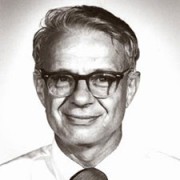Professors’ Positive Impact
Steven Collicott, BSAE 1983, Professor of Aeronautics and Astronautics, Purdue University
I’ve more stories of our professors’ positive impact on my career than people will care to read. But very brief examples would be Prof. Willmarth’s interest in me, just another curious undergrad, and how he devoted time to advising my small research project in my senior year and how observing his candor gave me confidence in expressing myself, how Prof. Adamson’s constantly visible love of his profession was inspiring, how the young Prof. Driscoll advised me on what topics I should focus on for a career in fluids research (thirty years later, I assure you, he was absolutely on target!), how I learned so much more useful math from Prof. Sichel in Aero350 than in my mathematics classes, how Prof. Lesher teased us in Aero200 for weeks with his barometer-in-an-elevator problem, and numerous other memories of aerospace professors contributing to the students’ advancement. Read More »



